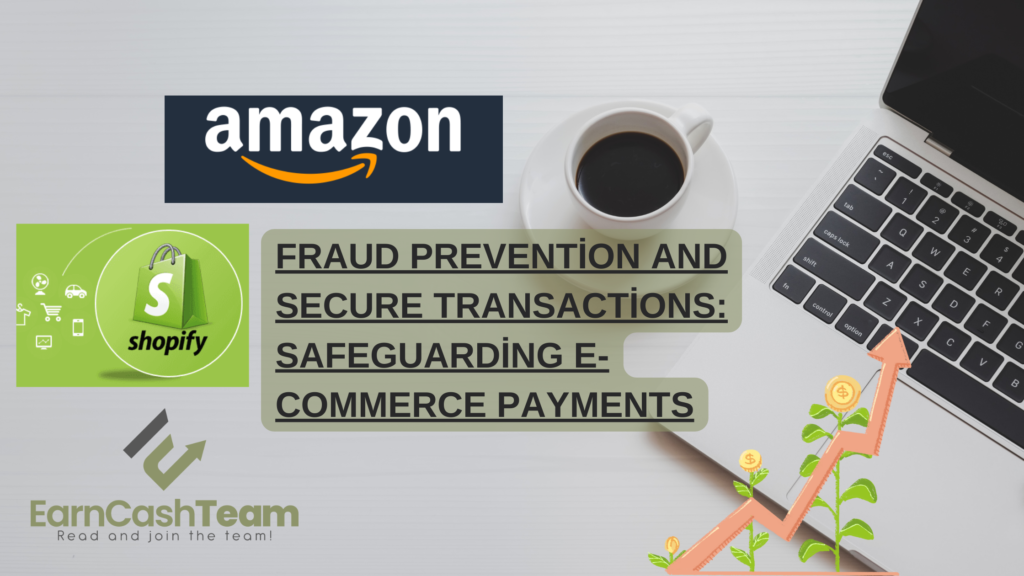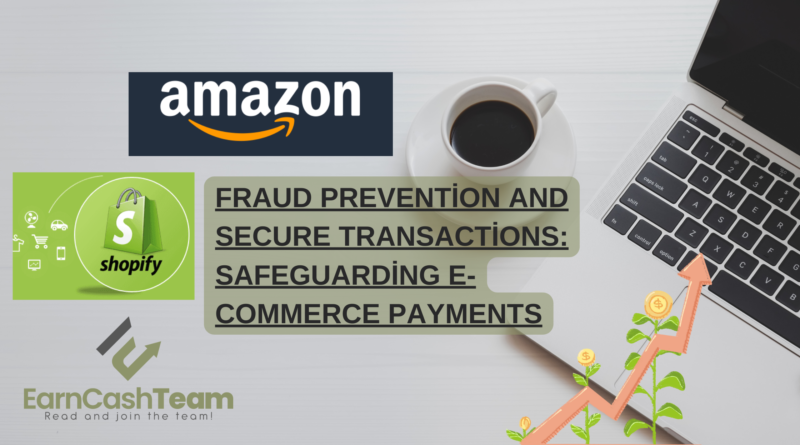Fraud Prevention and Secure Transactions: Safeguarding E-commerce Payments
In our era of technology the rise of e commerce has become an aspect of our everyday routines. We now have the convenience of purchasing a range of products from groceries to gadgets through platforms. Yet amidst this convenience we encounter obstacles especially when it comes to safeguarding our security. One of the most pressing issues is safeguarding e-commerce payments.
You can check out other tips for e-commerce with us!
You can also directly reach out Amazon, etsy, Shopify etc. now!

The Importance of Safeguarding E-commerce Payments
Why It Matters
The e commerce sector is experiencing growth. Unfortunately the incidence of online fraud is also, on the rise. As per a report from CyberSource businesses operating online suffer losses amounting to billions of dollars due, to payment fraud each year. This makes safeguarding e-commerce payments not just a technical requirement but a business imperative.
The Stakeholders
Not do businesses face the consequences. Consumers are also vulnerable. When a breach occurs it can result in identity theft and financial harm. That’s why both merchants and customers have a shared interest, in protecting e commerce payments.
Technologies and Strategies for Secure Transactions
Encryption
One of the highly efficient methods to ensure the safety of payments is, by utilizing encryption. Encryption employs protocols like Secure Socket Layer (SSL) and Transport Layer Security (TLS) to establish communication, over the internet.
Multi-Factor Authentication
Multi factor authentication (MFA) provides a level of security by asking for two or more verification methods, such, as a password, a card, a fingerprint or even facial recognition.
AI and Machine Learning
With the help of technology, like Artificial Intelligence and machine learning it’s possible to analyze transaction data in time and identify any suspicious or fraudulent activities. They can identify patterns and anomalies that might indicate fraud, thereby safeguarding e-commerce payments.
Best Practices for Fraud Prevention
Regular Monitoring and Audits
It is important to keep an eye on transactions as this can help catch any suspicious activities at an early stage. Conducting audits is also crucial to ensure that all security measures are current and working effectively.
Educating Customers
Often, the weakest link in the security chain is the end-user. Educating customers about the importance of strong passwords and secure networks can go a long way in safeguarding e-commerce payments.
Future Trends in E-commerce Security
As technology progresses the techniques used by cybercriminals also advance. In order to protect e commerce payments effectively it is essential for online platforms to remain proactive and stay updated with the security measures. Here are a few upcoming trends that can play a role, in ensuring the safety of e commerce transactions;
Blockchain Technology
Blockchain provides an trustworthy ledger system that promotes transparency and helps prevent fraud. Its decentralized nature makes it challenging for hackers to manipulate the system.
Biometric Verification
Fingerprints, recognition and even scans of the eyes are increasingly being used as ways to confirm someones identity. These biometric systems provide enhanced security compared to the use of passwords.
Quantum Computing
Even though quantum computing is still, in its stages it has the ability to completely transform encryption techniques rendering them unbreakable. However there is a catch as quantum computers could also be employed to decode current encryption algorithms.
By staying abreast of these emerging technologies and incorporating them into their security strategies, e-commerce businesses can continue to succeed in safeguarding e-commerce payments.
Final Thought
The importance of safeguarding e-commerce payments cannot be overstated. In todays landscape as the volume of transactions continues to rise it becomes crucial to address the associated risks. To ensure an shopping experience, for both merchants and consumers a combination of advanced technologies like encryption and multi factor authentication (MFA) can be employed. Additionally adopting practices such, as monitoring and educating customers can significantly contribute to enhancing security levels.




